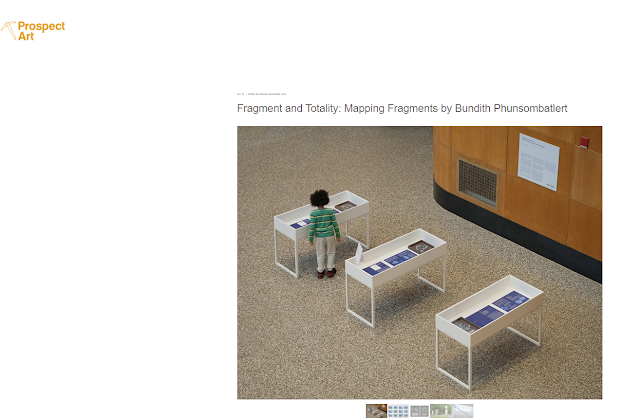Fragment and Totality: Mapping Fragments - Marcelo Guimarães Lima
Fragment and Totality: Mapping Fragments by Bundith Phunsombatlert
Marcelo Guimarães Lima
From his early education and works as a printmaker to his embrace of digital technologies going into the field of installation art, Thailand-born Bundith Phunsombatlert’s artistic practice can be defined, according to the artist´s own self-understanding, as a kind of transmedia practice, linking traditional and new media. An artistic praxis in which image making and image thinking, aesthetic concepts, and artistic forms, relating in many different ways the graphic arts, photography, digital photography, and video, come together within the medium of installation art with its proper spatial and temporal dimensions, narrative strategies, theatrical elements, and immersive structural models.
In evolutionary biology, it is argued that new species will carry within themselves the marks of their ancestrality, that is, basic determinations, components, functions, building materials, organs, etc., of ancient or superseded species. New species carry traces of their historical, that is, of their extended formation and time-bound construction, of the many elements that are transformed in the new organisms and yet can display their “infra-historical” depths to the expert eye within emerging and consolidated new structures. We can say that, in analogous ways, what we call here a transmedia approach in Bundith Phunsombatlert´s artworks also implies the idea of an archaeology of media, made of material connections and imaginative lineages and associations.
Mapping Fragments by Bundith Phunsombatlert is composed of two bodies of artworks:
Sunny Garden in Blue: Stories from the Caribbean to Brooklyn, and Mapping Fragments: History of Blue and White Porcelain. To explore individual stories, personal narratives of lives both experienced and imagined and to refer those directly and indirectly to the contexts of larger historical fluxes and geographical perspectives, are the specific goals and the combined results of both series, associating material and cultural exchanges by way of objects, including manufactured objects and natural entities, “in kind” and represented objects traveling across time and places, both recording and being recorded by environmental and technological transformations, among diverse geographies and historical periods.




Comments
Post a Comment